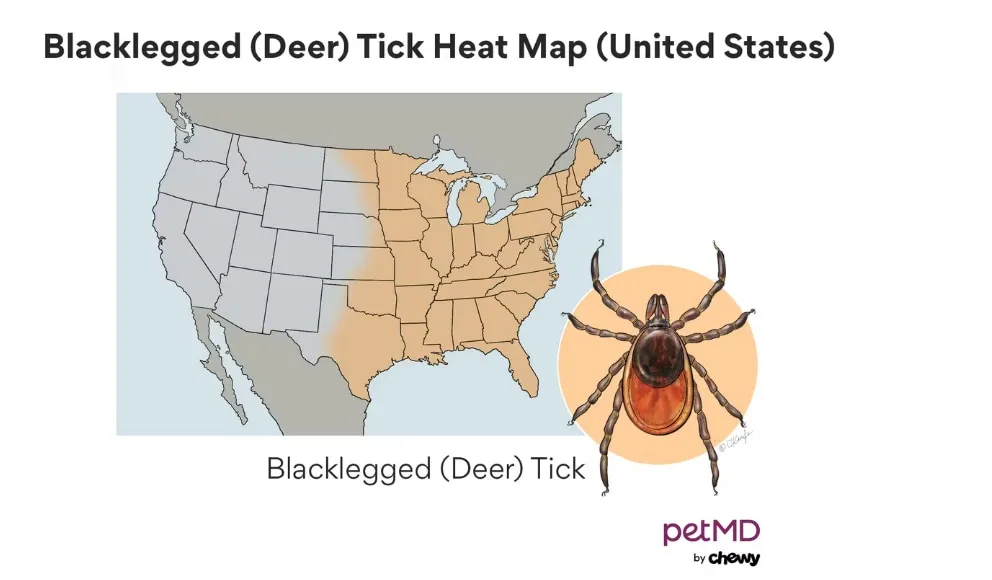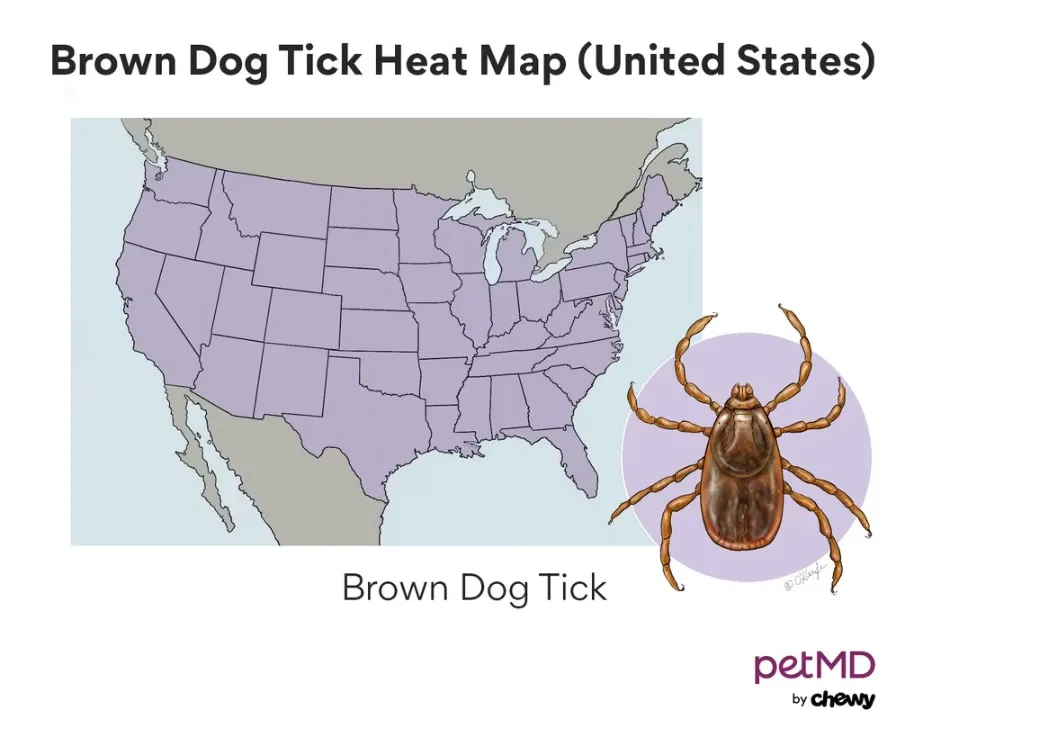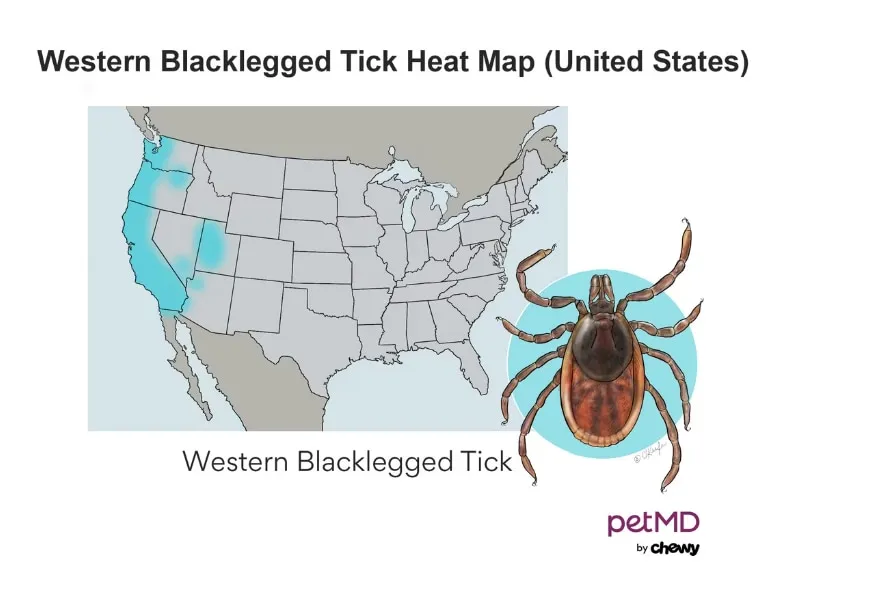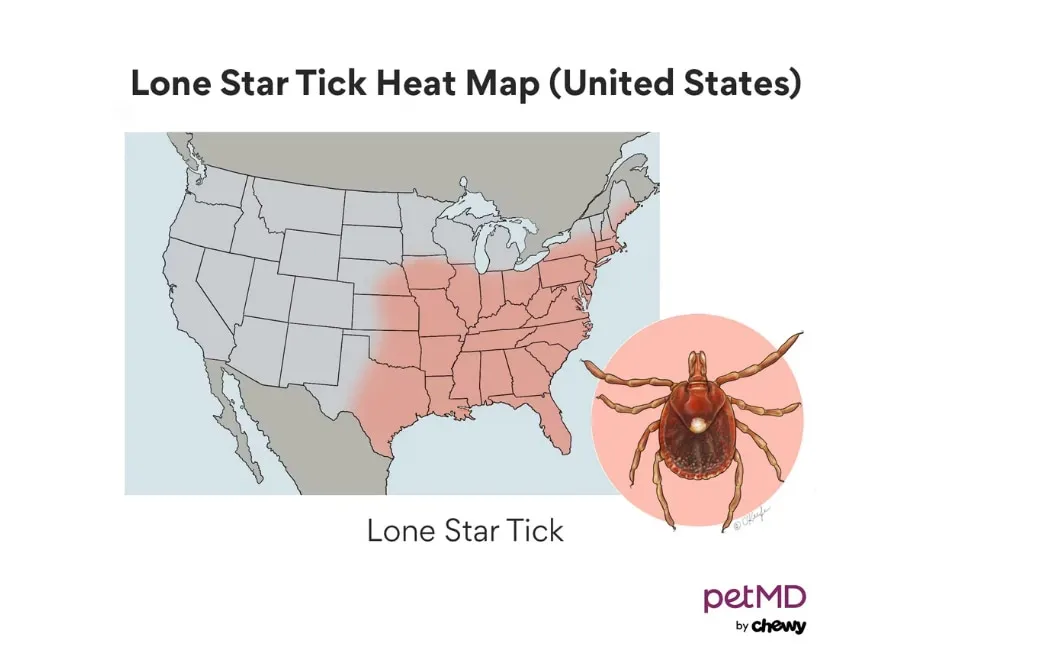Protecting your beloved canine companion from fleas and ticks is a non-negotiable aspect of responsible pet ownership. These tiny parasites aren’t just annoying; they pose significant health risks to your dog and can even transmit diseases to humans. Among the myriad of preventative options available, spot-on flea treatments for dogs stand out as a popular and effective choice for many pet parents. These topical solutions offer a convenient way to keep your dog healthy and your home parasite-free.
In this comprehensive guide, we’ll delve into everything you need to know about flea and tick prevention, with a special focus on selecting the Best Spot On Flea Treatment For Dogs. We’ll explore why prevention is crucial, when to administer it, what factors to consider when choosing a product, and provide an overview of some popular and highly-rated topical options.
Why Flea and Tick Prevention is Crucial for Your Dog
Fleas and ticks are ectoparasites, meaning they live on the outside of their host, feeding on blood. Their bites can have a direct and severe impact on your dog’s health, leading to a range of uncomfortable and even life-threatening conditions.
Flea bites can cause intense itching, leading to skin irritation and secondary bacterial infections. The saliva from a flea bite is a common allergen, triggering flea allergy dermatitis (FAD) in susceptible dogs, characterized by severe itching, redness, and hair loss. In young puppies or small dogs with heavy infestations, significant blood loss can even lead to anemia, a potentially fatal condition.
Tick bites, on the other hand, can cause localized infections, abscesses, and in rare cases, tick paralysis. More alarmingly, ticks are notorious vectors for a variety of serious diseases, including Lyme disease, Anaplasmosis, Ehrlichiosis, Rocky Mountain Spotted Fever, and Babesiosis. These diseases can cause chronic pain, organ damage, and if left untreated, can be fatal. Some of these tick-borne diseases, like Lyme disease, can also be transmitted to humans, highlighting the importance of keeping your dog protected to safeguard your entire household.
When is Flea and Tick Prevention Needed?
Fleas and ticks are incredibly resilient and can thrive in diverse geographical areas and climates. While their activity might peak during warmer months, they are a year-round threat in many regions, especially with indoor heating providing a conducive environment even in winter. Therefore, it is essential to maintain consistent flea and tick prevention for your dog throughout their entire life.
Veterinarians generally recommend starting flea and tick prevention as early as 8 weeks of age for puppies, ensuring they are protected from the very beginning. Continuous, year-round prevention is key to breaking the parasite life cycle and preventing infestations that can be much harder and more costly to eliminate once established.
Understanding Flea and Tick Treatment Types
When it comes to protecting your dog, you’ll find various forms of flea and tick preventatives, including oral medications, medicated collars, and topical spot-on treatments. Each type works differently to repel, kill, or inhibit the growth of parasites.
- Oral Medications: These are chewable tablets ingested by your dog, and the active ingredients circulate throughout their bloodstream. They are generally unaffected by bathing or swimming and can be a good option for picky eaters if flavored.
- Medicated Collars: These collars release active ingredients onto your dog’s skin and coat, distributing the protective compounds over time. Some collars offer extended protection for several months.
- Topical Spot-On Treatments: This is where our focus lies. Spot-on treatments are liquids applied directly to a small area of your dog’s skin, typically between the shoulder blades or down the back. The active ingredients then spread over the skin’s surface or are absorbed into the oil glands, providing protection against fleas and ticks. These are particularly beneficial for dogs that are difficult to give pills to or for owners who prefer not to use oral medications. If your dog suffers from skin issues, you might also be looking into options like how to heal my dogs dry skin.
Topical spot-on products contain various ingredients that act as pesticides, repellents, or growth inhibitors, targeting parasites at different life stages. Many also offer combination protection, using multiple active ingredients to tackle a broader spectrum of pests, sometimes including heartworms, mites, and intestinal parasites.
Key Considerations When Choosing the Best Spot On Flea Treatment for Your Dog
Selecting the right spot-on flea treatment requires careful consideration of several factors. Always consult with your veterinarian before deciding on any flea and tick medication to ensure it’s the safest and most effective fit for your individual dog. Your vet can provide personalized advice based on your dog’s health, lifestyle, and local parasite risks.
When reviewing product labels and discussing options with your veterinarian, ensure you cover these critical points:
- Species-Specific Product: Confirm the product is formulated specifically for dogs, not cats, as some ingredients toxic to cats are safe for dogs.
- Correct Weight Range: Ensure the product dosage matches your dog’s current weight. Using an incorrect dosage can be ineffective or harmful.
- Parasite Coverage: Verify that the spot-on protects against the specific parasites prevalent in your area (fleas, various types of ticks, chewing lice, mosquitoes, etc.).
- Administration Guidelines: Understand if the product should be applied with or without food (though this is mostly for oral medications, topical still has specific application instructions), how often it should be administered (typically monthly), and how long it takes to become effective.
- Bathing/Swimming Restrictions: Learn how soon after application your dog can be bathed or swim, as water can affect the efficacy of some topical treatments.
- Safety Concerns & Adverse Reactions: Be aware of any potential side effects or safety warnings, and know what steps to take if your dog experiences an adverse reaction. If your dog exhibits signs of stomach upset after treatment, you might also want to understand home remedies for dog vomiting and upset stomach.
Here are some additional factors to consider for topical spot-on treatments:
Application Method
While both oral and topical treatments offer distinct advantages, the choice depends on your dog’s temperament and your lifestyle. Spot-on treatments are an excellent choice for dogs who are finicky about taking pills or have sensitive stomachs. They are generally easy to apply, simply requiring you to part the fur and apply the liquid directly to the skin.
However, if you have small children or other pets in the household, you must exercise caution to ensure they do not touch or lick the application site before the product has completely dried. Additionally, if your dog is a frequent swimmer or requires regular baths, the efficacy of some topical treatments might be reduced, potentially requiring more frequent reapplication or consideration of an alternative product.
Geographic Location
The types of parasites and their prevalence can vary significantly by geographic location. What’s effective in one region might not be in another. Resources like the Companion Animal Parasite Council (CAPC) provide helpful, localized information on parasite populations. Consulting these resources and your local veterinarian can help you ensure the spot-on treatment you choose provides comprehensive protection against the specific threats in your area.
 Geographic distribution of ticks in North America
Geographic distribution of ticks in North America
Access to the Outdoors
A dog’s exposure risk to fleas and ticks is directly correlated with their time spent outdoors and the environments they frequent. Dog parks, hiking trails, wooded areas, tall grass, and even your own backyard can harbor these pests. If your dog spends considerable time in such areas, their risk of exposure is higher, necessitating robust protection.
Even indoor-only dogs are not immune. Fleas can hitch a ride into your home on other pets, on your clothing or shoes, or even through window screens. For this reason, veterinarians universally recommend year-round flea and tick prevention for all dogs, regardless of how much time they spend outside.
 Tick distribution map for specific regions
Tick distribution map for specific regions
MDR-1 Gene
Certain dog breeds, including Collies, Australian Shepherds, and Shetland Sheepdogs, may carry a specific gene mutation called MDR-1. This mutation can affect their ability to metabolize and excrete certain medications, making them more sensitive to some drug compounds. While many manufacturers of modern parasite preventatives have tested their products for safety in dogs with the MDR-1 mutation, it’s always wise to discuss this with your veterinarian, especially if you own an affected breed. Your vet may recommend testing for the MDR-1 gene.
Lifestyle
A dog’s lifestyle and activity level can influence their risk of parasite exposure. Working dogs, herding dogs, or hunting breeds that spend extensive time in fields, woods, or around livestock may face a higher risk than dogs that lead a more sedentary indoor life. While no breed is inherently more susceptible to acquiring fleas or ticks, the level of exposure plays a significant role. This is also important when considering what is the best snack for dogs for training or rewarding active dogs.
Life Stage
Age and size are crucial factors when selecting a spot-on treatment. Most flea and tick preventatives have a minimum age requirement, typically 8 weeks, and are formulated for specific weight ranges. It’s vital to choose a product appropriate for your dog’s current life stage—whether they are a young puppy, an adult, or a senior dog. Always check the package insert for specific age and weight guidelines. For puppies, selecting appropriate care, including understanding is puppy chow good for my puppy, is essential.
 Detailed tick incidence map
Detailed tick incidence map
Medical Conditions
Your dog’s medical history is a primary consideration. If your dog has a history of seizures, neurological disorders, or any other chronic illness, specific ingredients might need to be avoided or used with extreme caution. For example, some classes of preventatives (isoxazolines, predominantly found in oral treatments but it’s good to be aware) should be used cautiously in dogs prone to seizures.
Never use any preventative without a thorough discussion with your veterinarian if your dog:
- Has had a previous allergic reaction to medication.
- Is currently sick or underweight.
- Is pregnant, nursing, or being used for breeding.
 Tick prevalence and risk areas
Tick prevalence and risk areas
Over-the-Counter vs. Prescription Spot On Flea Treatments
The market offers both over-the-counter (OTC) and prescription-only spot-on flea and tick treatments. Understanding the difference can help you make an informed decision.
Over-the-Counter Flea and Tick Products
OTC spot-on preventatives are widely available online and in pet retail stores without a veterinarian’s prescription. While convenient, it’s still highly recommended to consult with your veterinarian even when choosing an OTC option. They can help you determine if the product is safe and effective for your pet, considering potential interactions with other medications or underlying health conditions.
Prescription Flea and Tick Products
Prescription spot-on flea and tick treatments typically require a veterinary visit and a prescription. These products often contain newer, more potent active ingredients and have undergone extensive testing, leading many veterinarians to recommend them for their enhanced effectiveness and safety profiles. While they might have a slightly higher upfront cost, the superior protection and peace of mind they offer often make them a worthwhile investment.
Popular Spot On Flea Treatments for Dogs
Here’s a look at some of the most popular and effective spot-on and topical flea and tick prevention products available for dogs. Remember to always consult your veterinarian to determine the best option for your dog.
Advantage II
Advantage II is a topical, monthly spot-on treatment containing imidacloprid and pyriproxyfen. This combination acts rapidly, killing adult fleas within hours and targeting flea eggs and larvae to prevent re-infestation. It is also effective against chewing lice. However, it does not provide protection against ticks. This product is suitable for dogs and puppies over 7 weeks of age and weighing more than 3 pounds.
Advantage Multi
Advantage Multi is a broad-spectrum topical solution for monthly application, combining imidacloprid and moxidectin. It effectively treats and controls fleas, sarcoptic mange, and intestinal parasites such as hookworms, roundworms, and whipworms. Additionally, it provides essential prevention against heartworm disease. While fast-acting against fleas (within hours), other parasites may take up to 24 hours to be treated. Importantly, Advantage Multi does not offer tick prevention. It is recommended for dogs and puppies aged 7 weeks or older and weighing over 3 pounds.
Frontline Gold
Frontline Gold is a monthly topical spot-on treatment formulated with fipronil, (s)-methoprene, and pyriproxyfen. This triple-action formula rapidly kills fleas, ticks, and chewing lice. It’s designed to start working within hours of application, providing quick relief and protection. Frontline Gold is safe for dogs and puppies over 8 weeks of age and weighing more than 5 pounds.
Frontline Plus
Another monthly topical option, Frontline Plus, contains fipronil and (s)-methoprene. This combination effectively kills adult fleas, ticks, and chewing lice, and also disrupts the flea life cycle by killing flea eggs and larvae. While fast-acting, its onset of action might be slightly slower compared to Frontline Gold. It is approved for dogs and puppies over 8 weeks old and weighing over 5 pounds.
Frontline Shield
Frontline Shield is a monthly topical product that stands out for its comprehensive protection. It utilizes fipronil, permethrin, and pyriproxyfen to kill fleas, ticks, and chewing lice, and stable flies. Additionally, it repels mosquitoes, stable flies, and ticks, adding an extra layer of defense. Frontline Shield begins killing fleas in as little as five minutes and ticks within an hour. This product is for dogs and puppies over 9 weeks old and weighing more than 5 pounds. A critical warning: this product is highly toxic to cats. Extreme caution or avoidance is necessary in households with cats.
K9 Advantix II
K9 Advantix II is a monthly topical spot-on renowned for its repellent properties in addition to killing parasites. Its active ingredients are imidacloprid, permethrin, and pyriproxyfen. This powerful combination repels and kills fleas, ticks, and mosquitoes, while also repelling biting flies and killing chewing lice. K9 Advantix II starts working within hours. It is suitable for dogs and puppies over 7 weeks old and weighing more than 4 pounds. Similar to Frontline Shield, K9 Advantix II is highly toxic to cats and must be used with extreme caution or avoided in multi-pet households that include cats.
Onguard Plus
Onguard Plus is a monthly topical spot-on containing fipronil and (s)-methoprene. This combination is effective against all stages of fleas, ticks, sarcoptic mange, and chewing lice. It’s a reliable option for broad-spectrum parasite control. Onguard Plus is recommended for dogs and puppies over 8 weeks old and weighing more than 5 pounds.
Seresto
The Seresto collar, while not a liquid spot-on, is a topical preventative that deserves mention due to its unique delivery system and extended efficacy. It contains imidacloprid and flumethrin, which are continuously released from the collar and spread over the dog’s skin and coat. This combination kills and repels fleas and ticks for up to eight months. Fleas are killed within 24 hours of application, and ticks within 48 hours. If your dog swims or is bathed frequently (more than once a month), the collar’s efficacy may be reduced, potentially requiring replacement every five months. Seresto is suitable for dogs and puppies over 7 weeks of age.
Vectra 3D
Vectra 3D is a monthly topical spot-on treatment containing dinitefuran, permethrin, and pyriproxyfen. This comprehensive formula repels and kills fleas, ticks, mosquitoes, chewing lice, sand flies, biting flies, and certain mites. It begins killing parasites within hours of application. Vectra 3D is approved for dogs and puppies over 8 weeks old and weighing more than 5 pounds. As with other permethrin-containing products, Vectra 3D is highly toxic to cats, requiring extreme caution or avoidance in homes with felines.
Conclusion
Choosing the best spot on flea treatment for dogs is a critical decision that impacts your dog’s health and the well-being of your entire household. Fleas and ticks are more than just pests; they are carriers of serious diseases and can cause significant discomfort and health issues for your furry friend. Year-round prevention is paramount, and topical spot-on treatments offer an effective and convenient method of protection for many dogs.
Always remember that your veterinarian is your best resource for personalized advice. They can help you navigate the various options, considering your dog’s specific needs, health history, lifestyle, and the parasite risks in your local area. By partnering with your vet and staying consistent with preventative care, you can ensure your dog remains happy, healthy, and free from the threat of fleas and ticks. Protect your canine companion today, and enjoy a worry-free life together!
References
- PetMD. Flea and Tick Prevention for Dogs.
- Companion Animal Parasite Council (CAPC).
- Lauren Jones, VMD, Veterinarian.
